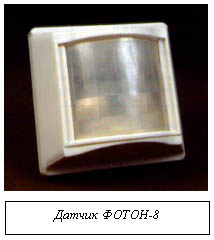| Briefly about the radioactive gas radon.
Briefly about the radioactive gas radon. Radon is an inert gas that has no color, taste, or odor. Of the three isotopes of radon (radon, thoron, and actinon), which are radioactive gases, radon-222 poses the greatest radiation hazard to the population. This radioactive gas is formed as a result of the radioactive decay of radium-226, which is contained in rocks, and is constantly released into the atmosphere from the earth's interior. Radon can spread over large distances from the places where it is formed and accumulate in the atmosphere of buildings. As numerous studies have shown, the volumetric activity of radon in the air of residential premises can vary from several Bq/m3 to 100,000 Bq/m3. Reference: Bq/m3 is a unit of measurement of the volumetric activity of radon in the air (Becquerel per cubic meter of indoor air), 1 Bq is equal to one decay per second. When decaying, radon emits alpha particles that cause irradiation of the skin surface and lung tissue. In addition, the decay of radon is accompanied by the formation of radioisotopes of lead, bismuth and polonium. The decay products of radon are radioactive solids that form so-called aerosols — particles so small that they can remain suspended in the air for a very long time, enter the lungs with it and cause internal irradiation. Radon gives an average of up to 54% of the radiation dose that every inhabitant of the Earth regularly receives, while the actual doses can differ significantly (tens and hundreds of times) from the average. According to modern knowledge, the risk of death from lung cancer associated with increased volumetric activity of radon in the air of buildings seems to be the most significant. In Lugansk and Lugansk region, the maximum levels of radon-222 volumetric activity recorded in the air of residential premises reach 2000 Bq/m3, in the air of semi-basements – 5800 Bq/m3, and in the air of the underground space – 12000 Bq/m3. The only reliable way to detect radon hazard in premises is direct measurement of the volumetric activity of radon or its decay products. In accordance with the Law of Ukraine «On the Protection of the Population from the Effects of Ionizing Radiation», every person who resides or is temporarily located on the territory of Ukraine has the right to protection from the effects of ionizing radiation. This right is ensured by implementing a set of measures to prevent the effects of ionizing radiation on the human body above the established dose limits of radiation, compensation for exceeding the established dose limits of radiation and compensation for damage caused by the effects of ionizing radiation (Article 3). The basic dose limit of individual radiation exposure of the population should not exceed 1 mSv of effective radiation dose per year (Article 5). The radiation safety standards of Ukraine (NRBU-97) establish that the action levels (permissible values) for the premises of children's, health resort and medical and health institutions for the equivalent dose rate of gamma radiation are 0.26 μSv/hour, and for the equivalent equilibrium volumetric activity (EEVA) of radon-222 — 50 Bq/m3. For reference: when staying in rooms where the volumetric activity of radon in the air is 300 Bq/m3 (EEVA = 120 Bq/m3), for 2000 hours per year (8 hours on working days), a person receives an effective dose of radiation equal to 1.46 mSv. Since 2001, as a result of inspections of four hundred premises in preschool institutions, schools, and health care facilities located in radon-hazardous regions of the Luhansk region, it has been established that in most premises (62%) the EEVA of radon-222 in the air exceeds the action level established by NRBU-97. To eliminate the radon hazard, the Scientific and Production Enterprise «OPYT», based on the results of radiation surveys of buildings and premises, develops recommendations and carries out effective anti-radon measures. Among them are the simplest — optimization of the ventilation mode and, relatively labor-intensive: equipment of underfloor ventilation or installation of electric ventilation systems. In 104 premises where anti-radon measures were carried out, it was possible to reduce the radon concentration, bringing it to the norm. Head of the Radiation Monitoring Laboratory, Igor Aleksandrovich Makhnev. |
